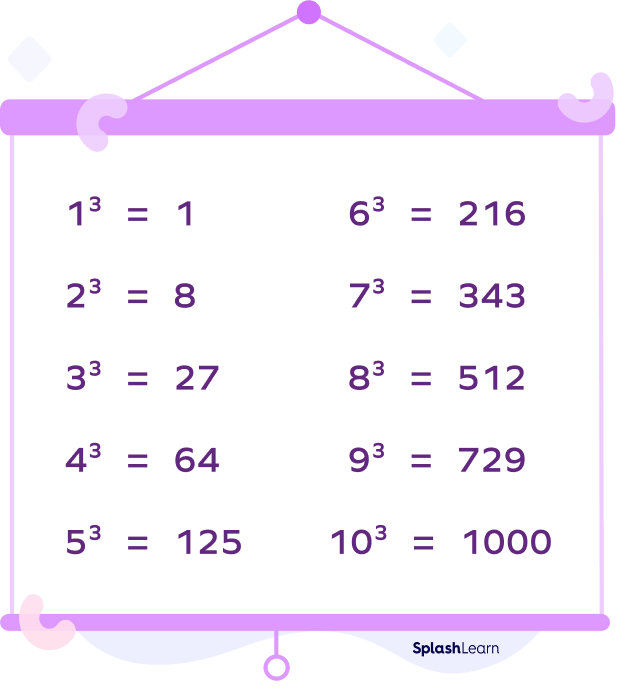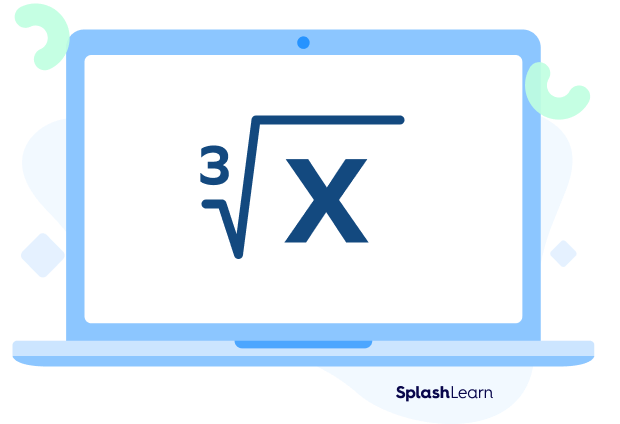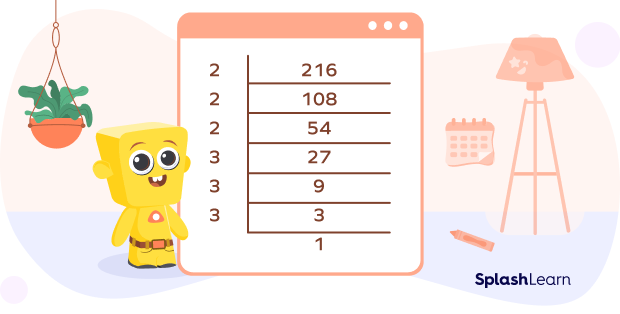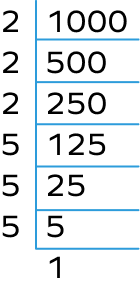What Are Perfect Cubes
When we multiply the same integer thrice, the number we get is called a perfect cube number.
For example, if we multiply the number 2 thrice, the product is 8.
Therefore, 8 is a perfect cube.
$2 \times 2 \times 2 = 8$
Here are a few examples of perfect cubes.

Perfect Cube: Definition
If a number can be decomposed into a product of the same three integers, it is known as a perfect cube. In other words, if the cube root of a number is an integer, then the number can be considered as a perfect cube.
If x is a perfect cube of y, then we represent it as $x = y^{3}$.
Thus, in other words, the cube root of x is y.
We write it as $^{3}\sqrt{x}= y$.
We write “n cubed” as $n^{3}$.
Perfect cube examples: $1^{3} = 1, 2^{3} = 8, 3^{3} = 27, 5^{3} = 125,$ etc.
Note that we can find a cube of any number, whether it is an integer or a decimal, or a fraction.
For example, the cube of 0.2 is given by
$0.2 \times 0.2 \times 0.2=0.008$
Recommended Games
List of Perfect Cubes 1 to 50
The table given below shows the list of perfect cubes we get if we multiply natural numbers $(1\;–\;50)$ thrice.
Perfect Cubes Chart
| Number | Multiplied Thrice | Perfect Cubes | Number | Multiplied Thrice | Perfect Cubes | |
| 1 | $1 \times 1 \times 1$ | 1 | 26 | $26 \times 26 \times 26$ | 17576 | |
| 2 | $2 \times 2 \times 2$ | 8 | 27 | $27 \times 27 \times 27$ | 19683 | |
| 3 | $3 \times 3 \times 3$ | 27 | 28 | $28 \times 28 \times 28$ | 21952 | |
| 4 | $4 \times 4 \times 4$ | 64 | 29 | $29 \times 29 \times 29$ | 24389 | |
| 5 | $5 \times 5 \times 5$ | 125 | 30 | $30 \times 30 \times 30$ | 27000 | |
| 6 | $6 \times 6 \times 6$ | 216 | 31 | $31 \times 31 \times 31$ | 29791 | |
| 7 | $7 \times 7 \times 7$ | 343 | 32 | $32 \times 32 \times 32$ | 32768 | |
| 8 | $8 \times 8 \times 8$ | 512 | 33 | $33 \times 33 \times 33$ | 35937 | |
| 9 | $9 \times 9 \times 9$ | 729 | 34 | $34 \times 34 \times 34$ | 39304 | |
| 10 | $10 \times 10 \times 10$ | 1000 | 35 | $35 \times 35 \times 35$ | 42875 | |
| 11 | $11 \times 11 \times 11$ | 1331 | 36 | $36 \times 36 \times 36$ | 46656 | |
| 12 | $12 \times 12 \times 12$ | 1728 | 37 | $37 \times 37 \times 37$ | 50653 | |
| 13 | $13 \times 13 \times 13$ | 2197 | 38 | $38 \times 38 \times 38$ | 54872 | |
| 14 | $14 \times 14 \times 14$ | 2744 | 39 | $39 \times 39 \times 39$ | 59319 | |
| 15 | $15 \times 15 \times 15$ | 3375 | 40 | $40 \times 40 \times 40$ | 64000 | |
| 16 | $16 \times 16 \times 16$ | 4096 | 41 | $41 \times 41 \times 41$ | 68921 | |
| 17 | $17 \times 17 \times 17$ | 4913 | 42 | $42 \times 42 \times 42$ | 74088 | |
| 18 | $18 \times 18 \times 18$ | 5832 | 43 | $43 \times 43 \times 43$ | 79507 | |
| 19 | $19 \times 19 \times 19$ | 6859 | 44 | $44 \times 44 \times 44$ | 85184 | |
| 20 | $20 \times 20 \times 20$ | 8000 | 45 | $45 \times 45 \times 45$ | 91125 | |
| 21 | $21 \times 21 \times 21$ | 9261 | 46 | $46 \times 46 \times 46$ | 97336 | |
| 22 | $22 \times 22 \times 22$ | 10648 | 47 | $47 \times 47 \times 47$ | 103823 | |
| 23 | $23 \times 23 \times 23$ | 12167 | 48 | $48 \times 48 \times 48$ | 110592 | |
| 24 | $24 \times 24 \times 24$ | 13824 | 49 | $49 \times 49 \times 49$ | 117649 | |
| 25 | $25 \times 25 \times 25$ | 15625 | 50 | $50 \times 50 \times 50$ | 125000 |
Recommended Worksheets
Cube Root of Perfect Cubes
When we multiply a number three times by itself, we say that the number is “cubed.” To find the cube root of a number, we need to reverse the process of cubing a number. For example:
When the number 3 is cubed, we get $3 \times 3 \times 3$, which is 27. The cube root of 27 is 3. This is because we get 27 on multiplying the number 3 three times. The symbol for cube root is $^{3}\sqrt{}$.
If we want to express this in exponent form, we write it as:
Cube root of a number $= (number)^{\frac{1}{3}}$.

How to Find a Perfect Cube
Every composite number can be expressed as the product of the power of its prime factors. If the power of all the prime factors is in the multiple of 3, then the number is known as a perfect cube. Each prime factor of a number appears three times in the prime factorization of its cube.
Step 1: Find the prime factorization of the given number.
Step 2: Club all the same factors together.
Step 3: Repeat the above step for all the sets of the group of the same three factors. If some factors are left behind, then we conclude that the given number is not a perfect cube. Otherwise, the given number is a perfect cube.
Let us take the following example to understand this.
Example 1: Check if 2197 is a perfect cube number?
Let us first find the prime factorization of 2197.
$2197 = 13 \times 13 \times 13 = 13^{3}$
Hence, 2197 is a perfect cube of 13.
Example 2: Is 216 a perfect cube?

$216 = (2 \times2 \times 2) \times (3 \times 3 \times 3) = 2^{3} \times 3^{3} = 6^{3}$
Thus, 216 is a perfect cube.
Perfect Cube Formula
To identify a perfect cube, we use the perfect cube formula. Suppose we have a number, x, such that
$x = y \times y \times y$
Properties of Perfect Cubes
- An even number has a cube which is even. For example, $2^{3} = 8$
- An odd number has a cube which is odd. For example, $3^{3} = 27$
- We can express the perfect cube of a number as the sum of consecutive odd numbers.
$1^{3} = 1$
$2^{3} = 3 + 5 = 8$
$3^{3} = 7 + 9 + 11 = 27$
$4^{3} = 13 + 15 + 17 + 19 = 64$
- The total count of consecutive odd numbers which sum up to form a perfect cube is equal to the number that is being cubed.
To express $1^{3}$, only 1 odd number is involved.
To express $2^{3}$, it involves the sum of 2 odd numbers, $3 + 5$.
Facts about Perfect Cube
- There are some special perfect cube roots that can be found using the sum of digits of the cube number. For example:
$^{3}\sqrt{0} = 0$
$^{3}\sqrt{1} = 1$
$^{3}\sqrt{512} = 5 + 1 + 2 = 8$
$^{3}\sqrt{4913} = 4 + 9 + 1 + 3 = 17$ etc.
- A cube is a geometric solid whose each side is of the same length.
The volume of a cube with side “s” is given by “s3” cubic units.
- The cube of negative numbers is negative.
Example: $(\;-6)^{3} = \;-\;216$
Conclusion
In this article, we learned about perfect cube numbers, their properties, and formulas. Let’s solve a few examples for better understanding.
Solved Examples on Perfect Cubes
1. Is 27 a perfect cube number?
Solution:
Let us find the prime factorization of 27.
$27 = 3 \times 3 \times 3$.
Since we can make one group of 3, i.e., $3^{3}$.
Therefore, 27 is a perfect cube. Its cube root is 3.
2. If the value of $x^{3} = 512$, find the value of “x” using the perfect cube formula.
Solution:
The perfect cube formula is $y = ^{3}\sqrt{x}$, where “x” is the perfect cube, and “y” is the cube root of “x.”
Given, $x^{3} = 512$, therefore, $y = ^{3}\sqrt{512}$.
Prime factorization of $512 = (2 \times 2 \times 2) \times (2 \times 2 \times 2) \times (2 \times 2 \times 2)$
$512 = (2 \times 2 \times 2)^{3} = 8^{3}$.
Therefore, $y = 8$
3. Is 1000 a perfect cube number?
Solution:
Let us first look at the prime factorization of 1000.

$1000 = 2 \times 2 \times 2 \times 5 \times 5 \times 5 = 10^{3}$
Thus, 1000 is a perfect cube number.
4. What is the perfect cube of 20?
Solution:
Multiply 20 three times with itself.
The perfect cube of $20 = 20 \times 20 \times 20 = 8000$
5. What is the cube root of 343?
Solution:
The prime factorization of 343 is:
$343 = 7 \times 49$
$343 =7 \times 7 \times 7$
$343 = 7^{3}$
Hence, the cube root of 343 is 7.
Practice Problems on Perfect Cubes
Perfect Cube of Numbers: Definition with Examples
125 is a _____.
$125 = 5 \times 5 \times 5 = 5^{3}$.
Therefore, 125 is a perfect cube.
If the value of $x^{3} = 729$, what is the value of “x” using the perfect cube formula?
$729 = 7^{3} = x^{3}$
Hence, $x = 7$.
What is the perfect cube of 5?
The perfect cube of $5 = 5 \times 5 \times 5 =125$.
What is the cube root of 1331?
The prime factorization of 1331 is:
$1331 = 11 \times 11 \times 11 = 113$
Hence, the cube root of 1331 is 11.
Which number is a perfect cube among the following options?
729 is a perfect cube of 9.
Frequently Asked Questions on Perfect Cubes
Can the perfect cube numbers be negative?
Yes, perfect cubes can be both positive and negative numbers.
For example, if we multiply the negative integer $-5$, three times, we get $-125$, which is a perfect cube.
What is the formula for $(a + b)^{3}$?
$(a + b)^{3} = a^{3} + b^{3} + 3a^{2}b + 3ab^{2}$
What are perfect squares?
A perfect square is a number obtained by multiplying an integer with itself.
How to factor a perfect cube binomial?
A perfect cube binomial is an expression consisting of two terms that are perfect cubes. We can factor a perfect cube binomial using the formula
$a^{3} \;-\; b^{3} = (a \;-\; b)(a^{2} + ab + b^{2})$
$a^{3} + b^{3} = (a \;-\; b)(a^{2} \;-\; ab + b^{2})$
Is 125 a perfect cube?
Yes, 125 is a cube of 5.





















